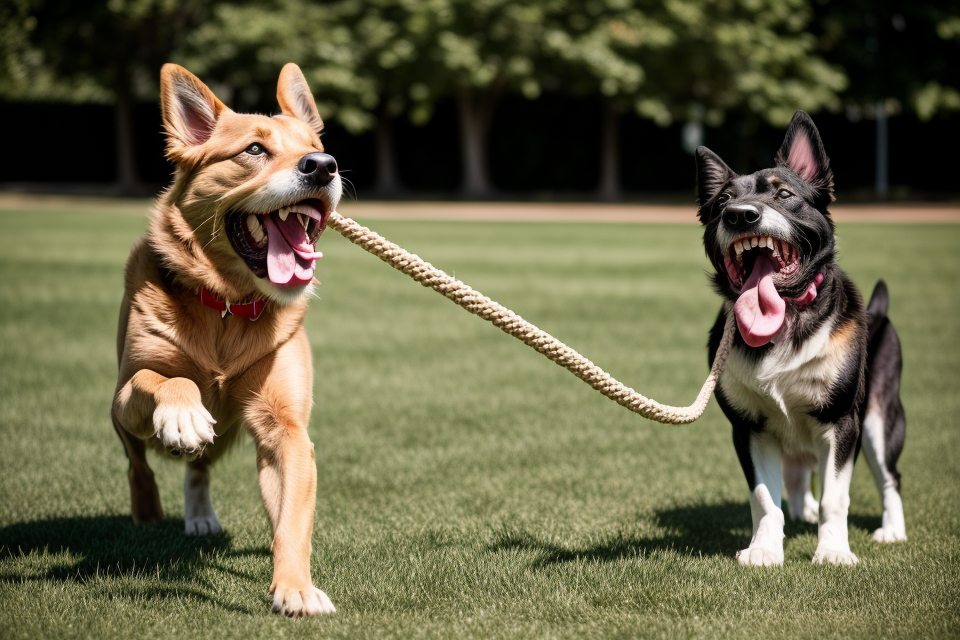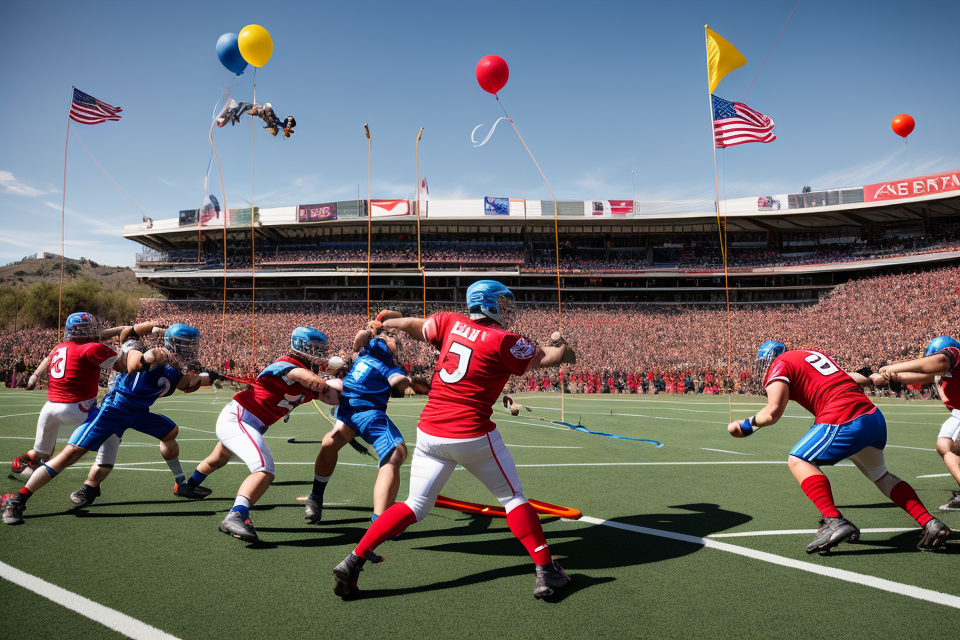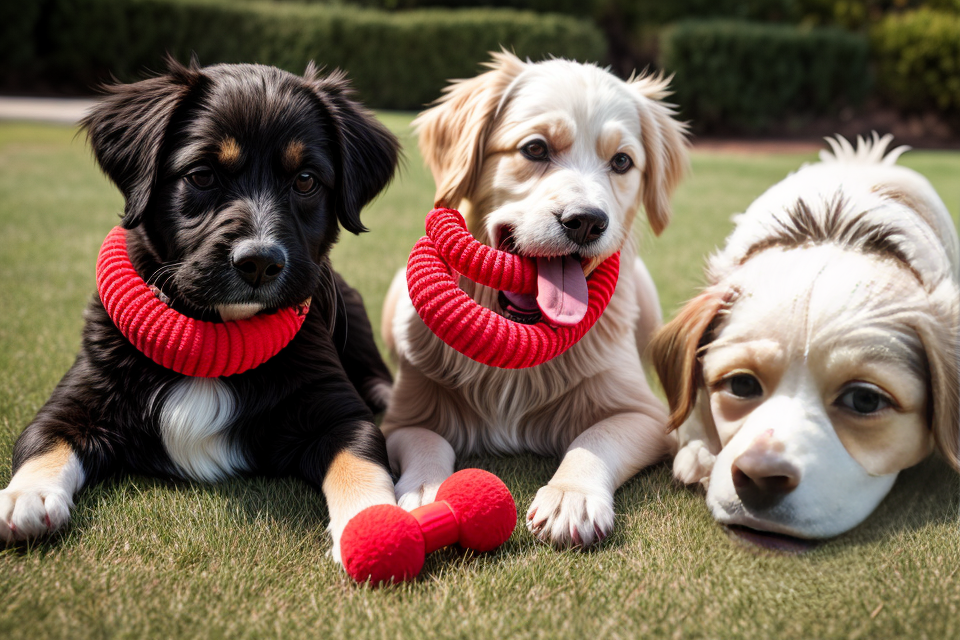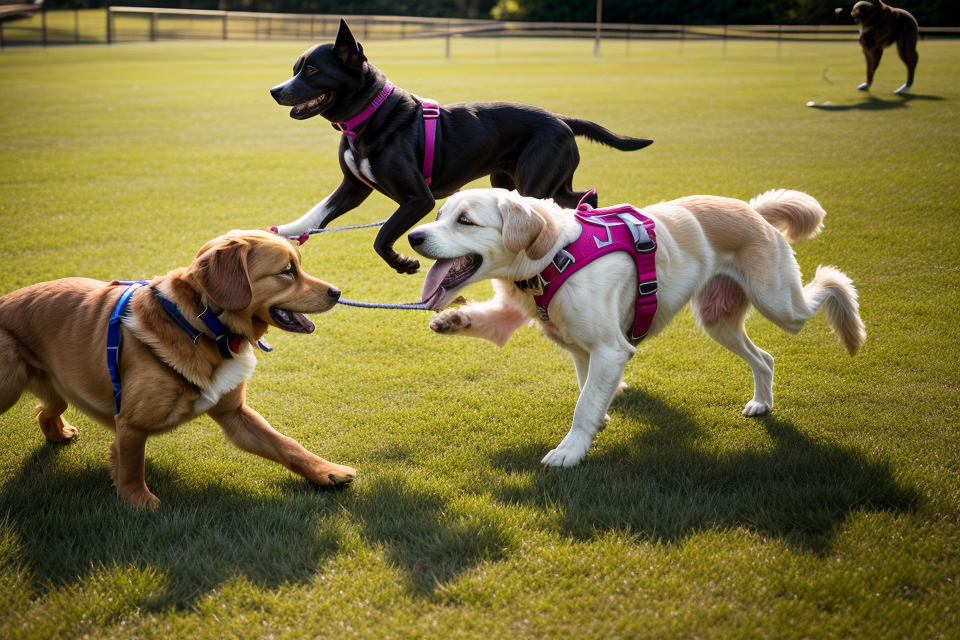Is it okay to let your furry friend growl while playing tug? This is a question that many dog owners often ponder over. On one hand, growling is a natural behavior for dogs and can be seen as a sign of playfulness and excitement. On the other hand, some people may interpret growling as a sign of aggression and may discourage it. In this article, we will explore the topic of whether it’s okay to let your dog growl while playing tug and provide insights on how to navigate this issue. Whether you’re a seasoned dog owner or a new pet parent, this article will provide valuable insights to help you understand your furry friend better. So, let’s dive in and explore the world of dog behavior and tug play!
Yes, it is perfectly fine to allow your dog to growl while playing tug. Growling is a natural canine behavior and is often a sign of playfulness or excitement. It is important to remember that dogs communicate through body language and vocalizations, and growling is one way they express themselves. However, if your dog’s growling becomes aggressive or intimidating, it is important to intervene and stop the behavior. It is also important to supervise your dog during playtime and ensure that the game remains fun and safe for both you and your pet.
Understanding Dog Growling
What is dog growling?
Dog growling is a form of communication that is exhibited by dogs when they feel threatened, scared, or protective of something. Growling is a vocalization that comes from the dog’s throat and is often accompanied by a deep, low-pitched sound. It is a way for dogs to express their discomfort or displeasure with a situation, and it can be a sign that they are feeling agitated or stressed.
There are different types of growls that dogs can produce, and each type can convey a different message. For example, a low-pitched, deep growl may indicate that the dog is feeling threatened or protective of something, while a higher-pitched growl may indicate that the dog is feeling scared or anxious. It is important to pay attention to the type of growl that your dog is producing, as it can provide insight into their emotional state and help you better understand their needs.
Why do dogs growl?
Dogs growl for several reasons, and understanding these reasons can help you better interpret your dog’s behavior.
Communication
Dogs use growling as a form of communication to express their needs, desires, or feelings. For example, when playing tug, your dog may growl to indicate that they want the toy or that they are feeling frustrated because they want to win. In this context, growling can be seen as a normal part of play and does not necessarily indicate aggression.
Fear
Dogs may also growl out of fear, especially if they feel threatened or unsafe. If your dog is growling while playing tug, it could be a sign that they are uncomfortable or anxious. In this case, it is important to take a break from the game and provide your dog with a safe space to retreat to.
Possessiveness
Growling can also be a sign of possessiveness, particularly when it comes to resources such as toys or food. If your dog is growling while playing tug, they may be trying to protect their toy or feel that it is their property. In this case, it is important to supervise the game and ensure that your dog is not becoming overly possessive or aggressive.
Overall, understanding why your dog is growling while playing tug can help you respond appropriately and ensure that your dog is comfortable and happy during playtime.
Is growling always a bad sign?
While growling is often perceived as a negative behavior, it is essential to understand that context matters. Growling is a normal canine communication method, and it is crucial to differentiate between play growls and aggressive growls.
- Play growls: Dogs may emit play growls during games like tug-of-war, indicating excitement and engagement. These growls are usually short and soft, and they do not pose a threat to humans or other animals. Play growls are a way for dogs to express enjoyment and participate in the play session.
- Aggressive growls: On the other hand, aggressive growls are deep, intense, and sustained. They indicate anger, frustration, or a warning of an impending attack. Aggressive growls are typically accompanied by other aggressive behaviors, such as snarling, baring teeth, or lunging.
It is essential to be able to differentiate between these two types of growls to understand the context of the dog’s behavior. If a dog is growling during a play session and the growls are short and soft, it is generally safe to assume that the dog is simply enjoying the game. However, if the growls are deep, intense, and sustained, it is important to end the play session immediately and address any underlying issues that may be causing the dog’s aggression.
In conclusion, while growling can be a normal part of a dog’s behavior, it is crucial to pay attention to the context and differentiate between play growls and aggressive growls. If a dog is growling during a play session and the growls are short and soft, it is usually safe to continue the game. However, if the growls are deep, intense, and sustained, it is important to address any underlying issues and end the play session immediately.
Playing Tug with Your Dog
Benefits of playing tug with your dog
- Bonding:
- Engaging in playtime activities with your dog is an excellent way to strengthen your bond.
- Playing tug allows you to spend quality time with your pet and establish a strong relationship.
- Interacting with your dog during play can also help you understand his body language and behavior better.
- Physical exercise:
- Playing tug is an excellent form of physical exercise for your dog.
- It helps to build muscle strength, endurance, and coordination.
- Engaging in regular physical activity is essential for maintaining your dog’s overall health and well-being.
- Mental stimulation:
- Playing tug provides mental stimulation for your dog.
- It encourages problem-solving skills and helps to prevent boredom.
- Mental stimulation is crucial for maintaining your dog’s cognitive abilities and preventing unwanted behaviors such as chewing and digging.
Choosing the right tug toy
When it comes to playing tug with your dog, choosing the right tug toy is crucial. Here are some factors to consider when selecting a tug toy for your furry friend:
- Size and material: The size and material of the tug toy can affect how much your dog can carry it and how long it will last. It’s important to choose a toy that is appropriate for your dog’s size and strength. A small dog may have more fun with a toy that is easy for them to carry, while a larger dog may enjoy a more substantial toy that can withstand their strength.
- Durability: Durability is also an important factor to consider when choosing a tug toy. You want to choose a toy that can withstand the rough play and tugging that will occur during the game. Look for toys made from high-quality materials that can withstand the wear and tear of playtime.
- Type of tug toy: There are many different types of tug toys available, including ropes, towels, and balls. Consider your dog’s preferences and play style when choosing a toy. Some dogs may prefer a soft toy that they can bite and shake, while others may prefer a harder toy that they can toss and retrieve.
By choosing the right tug toy, you can ensure that your dog has a fun and enjoyable time playing tug with you.
Tips for playing tug with your dog
When playing tug with your dog, it’s important to follow some simple tips to ensure a fun and safe experience for both you and your furry friend.
- Start with a soft toy: Before introducing a tug toy, start by playing with a soft toy, such as a stuffed animal or a toy that is not intended for tugging. This will help your dog get used to the concept of playing with a toy and will help prevent any confusion or aggression towards the tug toy.
- Gradually introduce a tug toy: Once your dog is comfortable with playing with a soft toy, you can gradually introduce a tug toy. Start by holding the toy loosely and allowing your dog to take it from you. As your dog becomes more comfortable, you can gradually increase the level of excitement by playing tug more aggressively.
- Alternate between playing tug and other games: To keep your dog engaged and to prevent any negative associations with tugging, it’s important to alternate between playing tug and other games, such as fetch or hide and seek. This will help keep your dog mentally stimulated and prevent any repetitive or boring playtime.
Managing Growling During Tug Play
What to do if your dog growls while playing tug
If your dog growls while playing tug, it’s important to take immediate action to ensure the safety of both you and your dog. Here are some steps you can take:
- Stop the game: The first thing you should do is to immediately stop the game. Do not continue playing tug with your dog if he or she is growling. Growling is a sign of discomfort or stress, and it’s important to listen to your dog’s body language.
- Change the game: If your dog is growling while playing tug, it’s possible that the game is causing him or her discomfort. In this case, you should try changing the game to something else that your dog enjoys. This could be a walk, a game of fetch, or a simple belly rub.
- Reinforce positive behavior: It’s important to reinforce positive behavior in your dog. If your dog is growling while playing tug, it’s likely that he or she is feeling stressed or uncomfortable. By reinforcing positive behavior, you can encourage your dog to feel more comfortable and relaxed during playtime. This could be done by giving your dog a treat or praising him or her for good behavior.
Remember, it’s important to always prioritize your dog’s safety and well-being. If your dog is growling while playing tug, it’s important to take immediate action to ensure that he or she is comfortable and happy.
Teaching alternative behaviors
Training your dog to exhibit alternative behaviors can help manage growling during tug play. By implementing positive reinforcement, you can encourage your dog to replace their growling with more appropriate behaviors.
- Positive Reinforcement: Positive reinforcement is a training technique that involves reinforcing desired behaviors by rewarding them. In the context of managing growling during tug play, you can reinforce your dog when they exhibit appropriate behaviors such as playing tug without growling. You can use treats, praise, or playtime as rewards to reinforce the desired behavior.
- Replacement Behaviors: Replacement behaviors are behaviors that replace undesirable behaviors. In the case of growling during tug play, you can teach your dog alternative behaviors to exhibit instead of growling. For example, you can teach your dog to pant or to play tug without growling.
- Consistency: Consistency is key when it comes to training your dog. It is important to be consistent in reinforcing the desired behavior and to reward your dog for exhibiting it. Consistency will help your dog understand what behaviors are expected of them and will help them to associate the desired behavior with positive reinforcement.
By teaching alternative behaviors, you can help your dog to manage their growling during tug play. It is important to remember that every dog is different and what works for one dog may not work for another. Be patient and consistent in your training and reward your dog for exhibiting the desired behavior.
Recap of key points
When it comes to managing growling during tug play, there are a few key points to keep in mind.
- Understanding dog growling: It’s important to understand that dog growling is a normal behavior and can indicate a variety of emotions, such as playfulness, fear, or aggression.
- Playing tug with your dog: Tug play can be a fun and rewarding activity for both you and your dog, but it’s important to ensure that the game is being played safely and fairly.
- Managing growling during tug play: If your dog begins to growl during tug play, it’s important to manage the situation in a way that is safe for both you and your dog. This may involve taking breaks, changing the rules of the game, or ending the play session altogether.
By understanding dog growling and managing it appropriately during tug play, you can help ensure that your dog remains happy and healthy while having fun with you.
Final thoughts
- Prioritize your dog’s well-being: It is important to remember that your dog’s behavior is a reflection of their emotional state. If they are growling while playing tug, it may be a sign of stress or discomfort. Make sure to monitor their body language and vocalizations to ensure that they are enjoying the game and not experiencing any negative emotions.
- Observe your dog’s behavior: Take note of your dog’s growling during tug play and consider how it changes over time. If the growling becomes more frequent or intense, it may be a sign that your dog is no longer enjoying the game and it may be time to take a break or switch to a different activity.
- Adjust your approach as needed: If your dog is growling during tug play, it may be necessary to adjust your approach to ensure that they are comfortable and having fun. This may include taking breaks more frequently, switching to a different type of toy, or modifying the way you play tug. Remember that every dog is unique and what works for one may not work for another, so be open to trying different approaches to find what works best for your dog.
FAQs
1. What is normal behavior for a dog during tug of war?
During tug of war, it is normal for a dog to be excited and vocal. Some dogs may bark, others may whine, and some may even growl. This is especially true if they are very invested in the game and want to win. However, if your dog’s growling becomes aggressive or if you notice any other changes in their behavior, it may be a sign that they are uncomfortable or stressed.
2. Is it normal for my dog to growl while playing tug?
Yes, it is normal for a dog to growl while playing tug. Growling is a natural way for dogs to express themselves and can be a sign of excitement or competitiveness. However, if your dog’s growling is accompanied by other signs of aggression, such as snarling, snapping, or biting, it may be a sign that they are uncomfortable or stressed.
3. Is it okay to let my dog growl while playing tug?
Yes, it is generally okay to let your dog growl while playing tug. Growling is a natural way for dogs to express themselves and can be a sign of excitement or competitiveness. However, it is important to monitor your dog’s behavior during playtime and make sure that they are not becoming overly aggressive or stressed. If you notice any signs of discomfort or aggression, it may be a good idea to take a break from the game or to try a different type of play.
4. What should I do if my dog’s growling becomes aggressive while playing tug?
If your dog’s growling becomes aggressive while playing tug, it is important to intervene and take a break from the game. You should also monitor your dog’s behavior and body language to make sure that they are not feeling uncomfortable or stressed. If your dog’s aggression persists or worsens, it may be a sign of a underlying issue and you should consult with a veterinarian or a certified animal behaviorist.



